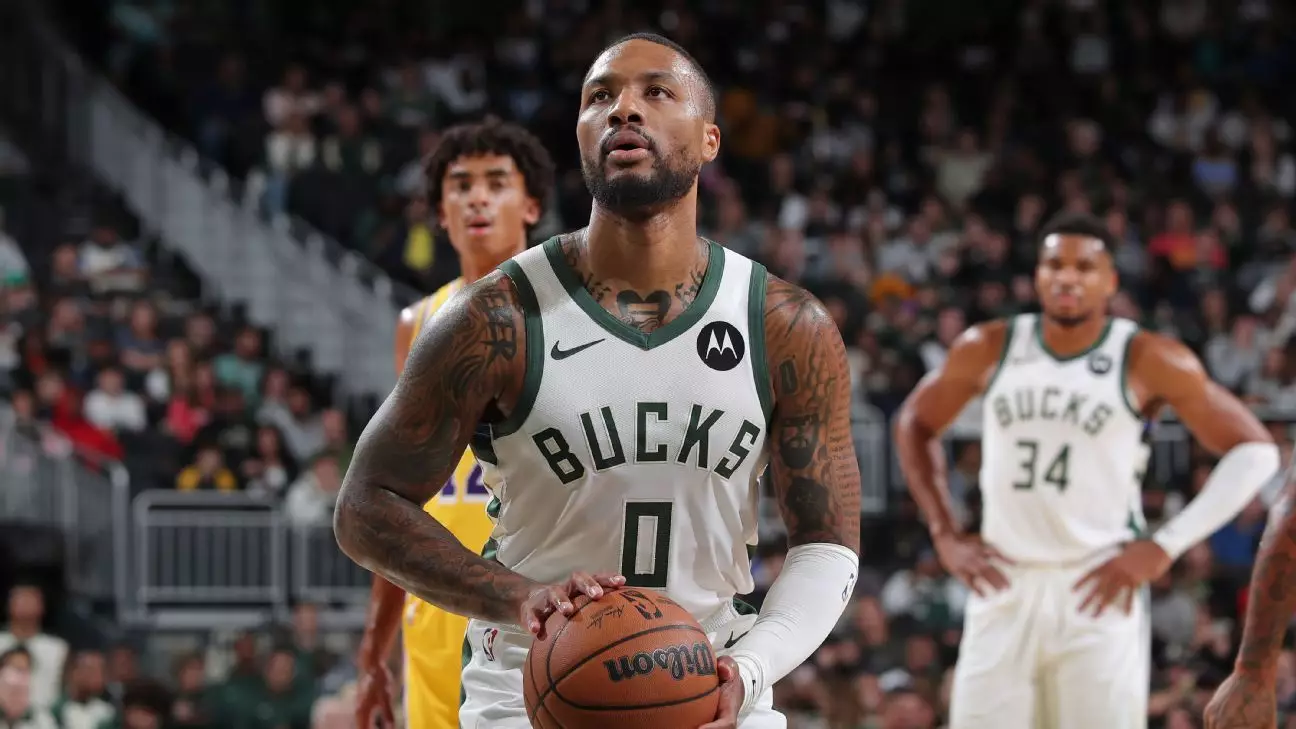The Milwaukee Bucks are facing a turbulent moment in their season following the diagnosis of star guard Damian Lillard with deep vein thrombosis (DVT) in his right calf. This potentially dangerous health issue has sidelined Lillard indefinitely, throwing the Bucks’ aspirations for a strong playoff run into uncertainty. Diagnosed after a series of consultations with specialists, Lillard is now on blood-thinning medication, which the organization reports has stabilized the clot. This diagnosis serves as a stark reminder of the fine line between athletic prowess and health vulnerabilities that professional athletes navigate daily.
A Franchise at a Crossroads
The timing of this injury is particularly detrimental for the Bucks. With the playoffs fast approaching, Lillard’s absence could not have come at a worse time. Milwaukee’s standing in the Eastern Conference is precarious; they have found themselves slipping to No. 5 after losing critical matchups. The Bucks’ recent struggles—losing six out of ten games—put them in direct contention with teams like the Detroit Pistons, who are just a half-game behind. The chemistry Lillard has built with superstar Giannis Antetokounmpo, forming one of the league’s most formidable scoring duos, is crucial for the team’s competitive edge, and his absence threatens to disrupt that synergy.
Impact on Team Dynamics
It’s notable that while the Bucks have demonstrated resilience, boasting an 8-5 record in games where Lillard sits out, their scoring efficiency takes a significant hit. The team averages a noticeable drop to 108.5 points per game without Lillard, in stark contrast to the 115.7 points they average when he is on the court. This change highlights the glaring gap left by the absence of a player who contributes extensively to both scoring and playmaking. With the playoffs looming and only 11 games remaining in the regular season, the pressure mounts for the remaining players to step up in Lillard’s absence.
The Broader Picture of Athlete Health
Lillard’s situation shifts the focus not only to the present plight of the Bucks but also to the broader issue of athlete health in competitive sports. Injuries like DVT present an often overlooked risk for players, who may prioritize performance over health. The swift identification and management of Lillard’s condition is fortunate and underscores the importance of regular medical assessments in professional sports. As Bucks GM Jon Horst emphasized, Lillard’s health is the priority, highlighting a responsibility that organizations owe to their players, not merely as assets but as individuals.
Looking Ahead: The Road to Recovery
While the specifics around the duration of Lillard’s absence remain hazy, the team remains committed to ensuring a safe return for their star. Doctors have assured that the likelihood of a similar incident recurring is minimal, which is a glimmer of hope in an otherwise gloomy scenario for Bucks fans. The upcoming games will test the depth of the roster and the resolve of a team that has faced adversity before. Last season’s struggles with Antetokounmpo’s calf injury, during their disappointing playoffs, echo in the frustration of fans as history seems poised to repeat itself.
Ultimately, as the Milwaukee Bucks navigate this challenging period, the focus will inevitably shift between immediate performance needs and long-term health strategies. The balancing act between these two priorities will be critical in shaping the trajectory of this season, and the Bucks need every ounce of willpower and resilience from their players and staff in these testing times.


Leave a Reply